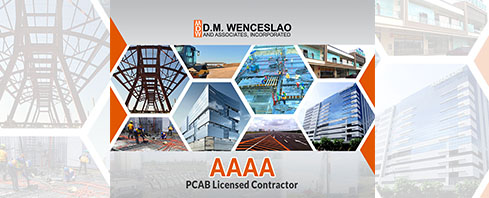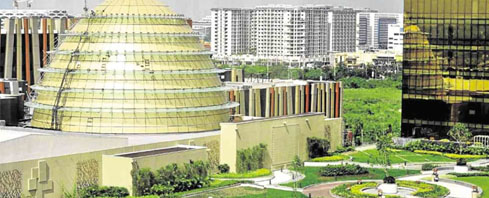DM Wenceslao receives highest certification
MANILA, Philippines — DM Wenceslao & Associates Inc., master developer of Aseana City, announced its readiness to bid for large scale Philippine infrastructure projects following the upgrading of its recent rating to a Quadruple A (“AAAA”) construction firm.
The highest classification and license category is issued by the Philippine Contractors Accreditation Board to firms that have shown financial capability, expertise and experience to undertake extensive and large scale construction works.
The “AAAA” rating came at a time President Duterte is ramping up infrastructure spending under his Build Build Build program to boost economic growth and reduce poverty. The government will budget P8-9 trillion for new roads, railways and airports from this year to 2022.
“We are in a good position to avail of opportunities available in this ‘golden age of infrastructure,’” said Engr. Paolo Wenceslao, COO of DM Wenceslao and Associates Inc. “The Quad A license recognizes the continuous growth of our company over the last 50 years. It started from a small company and is now one of the few that holds an ‘AAAA’ license.” As of the writing of this article, only eight construction companies were granted AAAA rating.
Founded in 1965 by Engr. Delfin M. Wenceslao with a vision to transform the urban landscape, the firm debuted in the construction of roads and bridges and government housing. To date, it has completed more than 100 construction and infrastructure projects throughout the country, including ports, bridges and expressways. In 1991, it took part in a massive reclamation project in Manila Bay that includes the 200-hectare Aseana City that is now emerging as a key central business district of Metro Manila given its strategic location. Aseana City serves as the company’s landbank for its own development projects.
Aseana City is now the site of the $1 billion hotel and casino complex City of Dreams Manila, as well as retail, commercial, office and residential developments. DMWAI built two office buildings, Aseana One and Aseana Two, which house banks, business process outsourcing sites, logistic companies, among others. Aseana Three is set for completion in 2017.
Business ( Article MRec ), pagematch: 1, sectionmatch: 1 The developer has in the pipeline a number of other projects including commercial and residential buildings. Its first residential development, Pixel Residences, is set for completion by 2019. The upscale residential development has larger format apartment units catering to the higher mid-end sector of the market.
DMWAI’s construction business allows it to easily deploy construction capabilities and expertise, as well as in-house resources and personnel such as experienced architects and engineers, for its own real estate projects and its maintenance and operation of Aseana City. As a contractor, it also offers an integrated range of services and products for the entire project cycle from pre-construction planning, construction and development, to post-completion property management.







